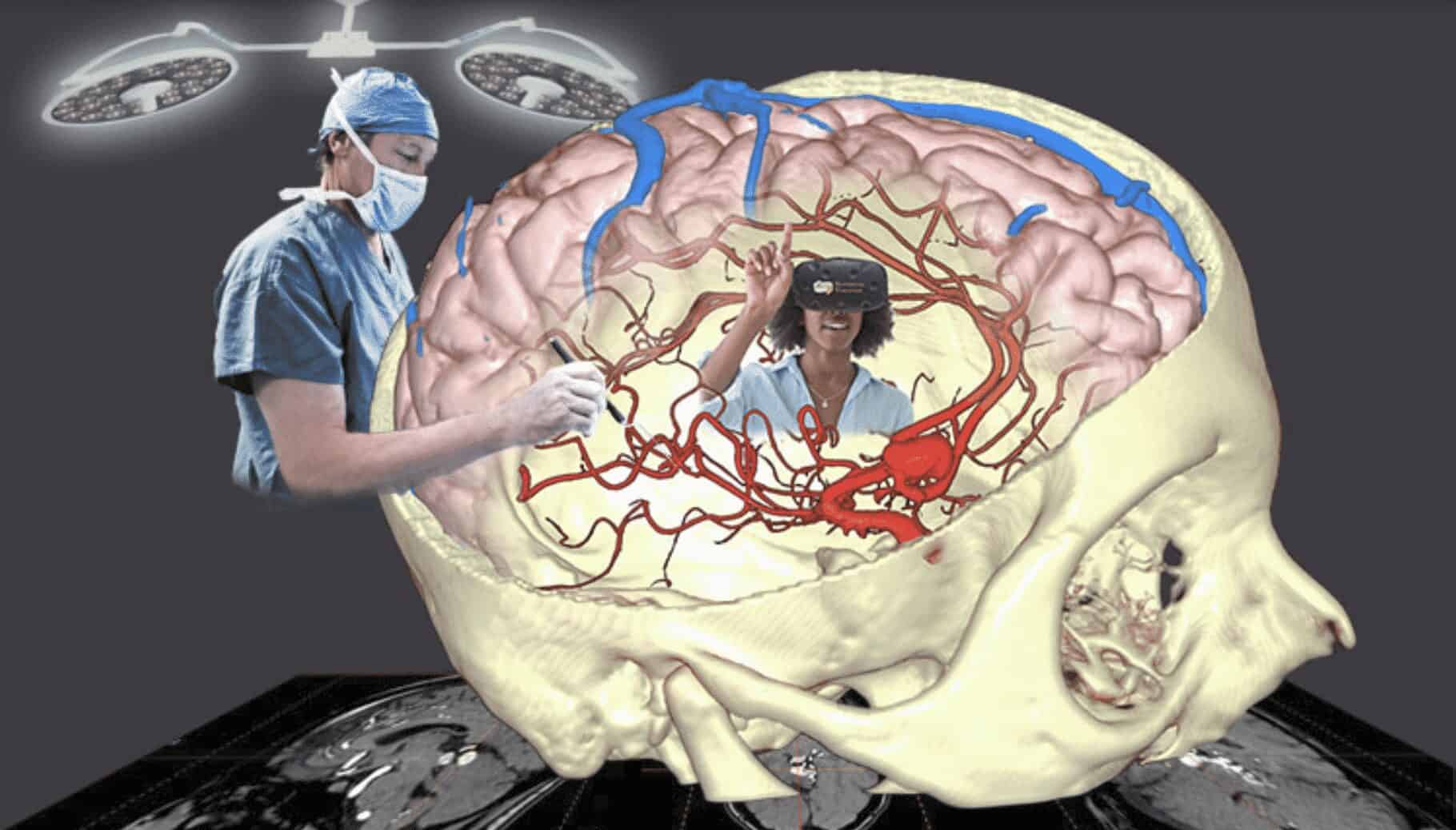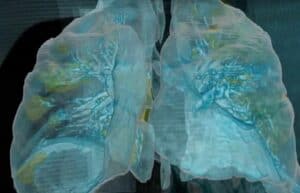Seeing the damage caused by the Coronavirus in virtual reality is an eye-opening experience. Most of the public understands the external symptoms of the virus but seeing the way it impacts the lungs is something that only VR can provide. As Dr. Keith Mortman of The George Washington University Hospital said in a podcast,
There is such a stark contrast between the virus-infected abnormal lung and the more healthy, adjacent lung tissue. And it’s such a contrast that you do not need an MD after your name to understand these images. This is something the general public can take a look at and really start to comprehend how severe the amount of damage this is causing the lung tissue. The damage we’re seeing is not isolated to any one part of the lung. This is severe damage to both lungs diffusely.
It’s one reason recovery can take so long and lead to enduring lung damage for those who survive COVID-19. That last point has been largely ignored in our public conversations. From what we know so far, most people dealing with virus will recover. What we don’t know is how many will live the rest of their lives with permanent lung damage.
We’ve already seen how scientists and medical professionals are using VR to describe and research the virus. But the GWU project of rendering the Coronavirus in virtual reality is the first instance of an experience accessible to the public.
Seeing the Coronavirus in Virtual Reality
On March 18, 2020, GWU received its first COVID-19 positive patient. The patient had been transferred from another hospital when his condition escalated. VentureBeat describes the project.
The VR video was codeveloped by GWU thoracic surgical chief Dr. Keith Mortman and Surgical Theater, developers of VR imaging software that uses real-world data to create medical-grade 3D visualizations. Mortman previously used the software to show patients their lung or esophageal tumors prior to surgery but saw an opportunity to reveal the unusual way COVID-19 operates after taking a CT scan of an infected patient.
Founded in 2010, Surgical Theater has one of the best taglines we’ve seen for a website: “Let’s walk inside your brain.”
They begin with a compelling premise – can we model surgical training on the way military pilots are trained?
What if surgeons could train like fighter pilots previewing their surgical procedure, much like a fighter pilot can pre-fly their mission? Surgeons would be able to increase their situational awareness from every angle and every approach as they planned a procedure. What if surgical residents could also have a place to refine and practice their skills in this system of surgical simulators? And, what if these simulators could help patients be engaged in their care plan like never before?

Take a look at their Clinical Gallery of 360 videos which are fascinating even from a lay person’s perspective. Their Precision VR platform relies on conventional 2D patient scans (CT, MRI, DTI, etc.) to create virtual simulations. The VR reconstructions can then be used to develop surgical skills for residents and collaborative environments for medical teams.
The VR experiences can also be used to help break down physician-patient barriers.
Led by the surgeon, the VR-empowered patients and their families virtually walk through their surgical plan, stepping into their own anatomy and diagnosis as they gain the deep understanding and trust needed to make complex medical decisions.
There’s no better way to understand a surgical procedure than to have a physician guide you through a tour of your own body – not from a generic model but your own CAT scan. And there may be no better way to understand the need for social distancing than to see the Coronavirus in virtual reality.
3D Visualization of the Coronavirus
Here’s the short video from Dr. Mortman’s work at GWU. In looking at the 3D visualization below, the lungs are rendered in translucent blue and the areas infected by COVID-19 in yellow.
Beyond the raw impact of the virus spreading throughout the lungs, GWU’s visualization shows how the body reacts to COVID-19 by creating multiple inflammation zones, collectively stifling normal lung capacity enough for patients to require hospitalization with either a breathing tube or ventilator.
While it would be more powerful to experience the Coronavirus in virtual reality through a headset, the 3D rendering on YouTube is accessible to everyone. With all too many reports of people crowding together and ignoring warnings about the virus, maybe this is what we need.

At least Dr. Mortman thinks so. According to VentureBeat,
Mortman hopes that seeing the severity of the infection using 3D visualizations will shock stubborn members of the public into staying home, washing their hands, and following other precautions to keep themselves and their communities safe.
As those of us living in New York City know all too well, it doesn’t take long to go from living with a few scattered cases to becoming the epicenter of a pandemic. But other cities and even rural communities could be at risk in the coming weeks.
Keep those 3D images in mind before you step outside.
Emory Craig is a writer, speaker, and consultant specializing in virtual reality (VR) and generative AI. With a rich background in art, new media, and higher education, he is a sought-after speaker at international conferences. Emory shares unique insights on innovation and collaborates with universities, nonprofits, businesses, and international organizations to develop transformative initiatives in XR, GenAI, and digital ethics. Passionate about harnessing the potential of cutting-edge technologies, he explores the ethical ramifications of blending the real with the virtual, sparking meaningful conversations about the future of human experience in an increasingly interconnected world.

